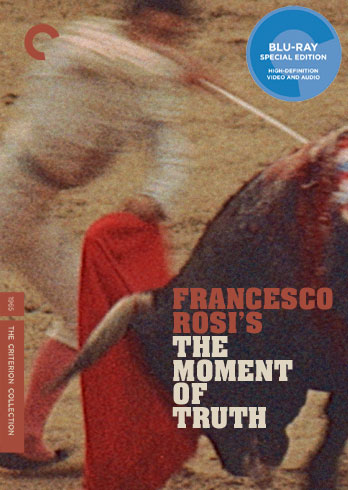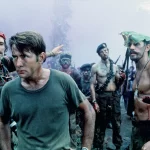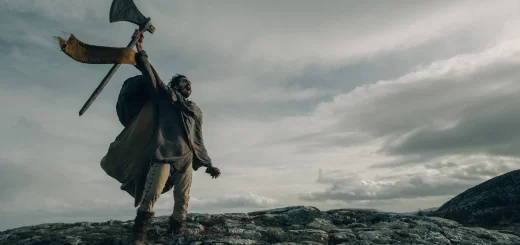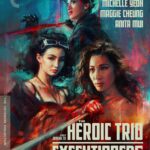Home Video Hovel- The Moment of Truth
For those of us who recognize bullfighting to be an irredeemably inhumane activity, The Moment of Truth is not an easy film to choke down. Director Francesco Rosi shows, at one point or another, every horrible second of the sport, and in this way, it’s a tremendously complex and honest film, tracing the rise of a torero (Miguel Mateo) and contrasting it against the violence he commits to get there. Rosi is to be commended for taking a documentarian’s approach to the bullfighting, simply observing the bullfights and other related events (the running of the bulls, etc.) in their pure, violent nature. The way he weaves this footage together is at once horrific, artful, honest, and probing, but it’s couched in a central story of much less relevance.
In the only special feature on Criterion’s new disc, Rosi (an Italian) talks about how he’d only been to Spain once before deciding to make this film, and only worked up the courage to do so when he remembered that Ernest Hemingway was also an outsider when he wrote Death in the Afternoon, a nonfiction examination of bullfighting. The film certainly benefits from Rosi’s curiosity about this world, but his concerns exist so far outside of his central story that one’s own interest in it could vary tremendously. For me, the horror of the bullfighting was a little too overpowering to fully appreciate Rosi’s aesthetic accomplishments. I’m not easily rattled by these sorts of things, but wait ‘til you see some of this. Or, you know, perhaps not.
The good news is that if you decide to take the plunge, The Criterion Collection has your back. The visual and audio presentation on their new Blu-ray is extraordinary; with only one short special feature, Criterion has space to let the picture sing. The image is nearly flawless, with big, bright, booming colors that still feel totally natural to what would have to be a very good film print. Grain is steady, becoming a little bit more present during the bullfights, when Rosi and cinematographer Pasquale de Santis (the film has three credited cinematographers, but Rosi specifically mentioned de Santis for this section) used a 300mm lens to capture the action inside the ring without actually being, you know, inside the ring. Those are naturally a little blurrier, a little less dynamic, color-wise, but all things considered, are a pretty impressive technical and aesthetic accomplishment.
The interview with Rosi provides interesting production details, and while it isn’t the most groundbreaking interview Criterion has offered, it’s nice, short, and covers a fair amount of ground.
The enclosed booklet features an essay by critic Peter Matthews, who offers a very compelling argument for the film’s import and quality.
Ultimately, if you have the stomach for it, the film may prove worthwhile yet. Its documentary aspects are both the film’s greatest asset and its most problematic – I can stomach all the violence a film can throw at me if it’s ultimately not real. But it’s undoubtedly an urgent, provocative piece of art, so I’d never write it off entirely. If its main story had similar qualities, I may be more willing to laud the film accordingly.






























